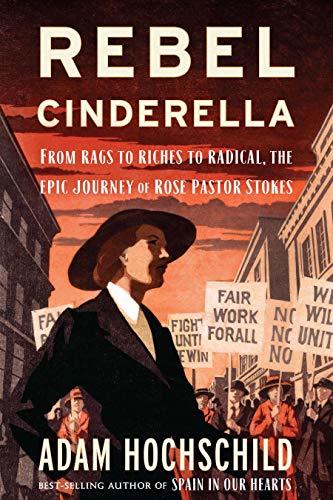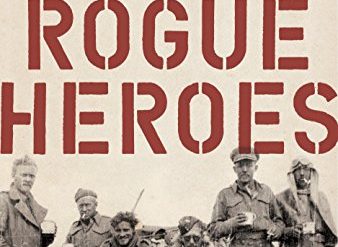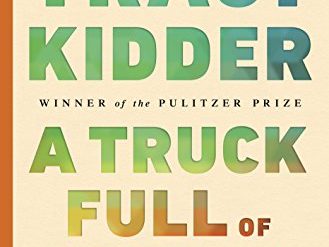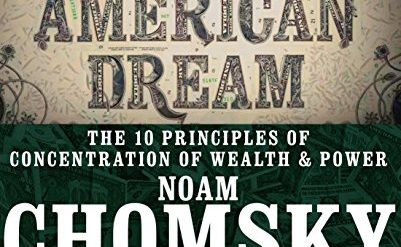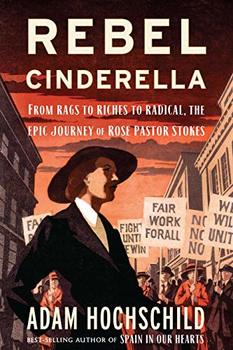
You’re unlikely ever to have come across her name before, but you’ll be fascinated by the remarkable story Berkeley author Adam Hochschild tells about her life in his latest excursion into popular history. Rose Pastor Stokes was one of the most famous and influential people, women OR men, during the crucial years that spanned the presidencies of Theodore Roosevelt, William Howard Taft, and Woodrow Wilson. From 1905 to 1921, she continuously captured newspaper headlines for her unlikely marriage to one of the country’s wealthiest men and her relentless campaign on behalf of the labor movement and socialism in America.
She experienced debilitating poverty, chronic hunger, and life-threatening working conditions
Born Rose Wieslander to an Orthodox Jewish family in the Russian Empire (present-day Poland) in 1879, she emigrated with her mother to the United States in 1890. At the age of eleven she went to work in a New York cigar factory, and for the next twelve years she experienced the debilitating poverty, chronic hunger, and life-threatening working conditions that millions of other immigrants went through in Gilded Age America. As Hochschild notes, “cigar workers suffered the second-highest death rate from tuberculosis of any occupation in America; only stonecutters had it worse. . . All her adult life, she would be troubled by lung problems.” And like thousands of others, the experience radicalized her, pointing her in the direction of the growing socialist movement in America.
Rebel Cinderella: From Rags to Riches to Radical, the Epic Journey of Rose Pastor Stokes by Adam Hochschild (2020) 320 pages ★★★★★
“From rags to riches to radical”
Not long after the turn of the twentieth century, Rose stumbled into a romantic relationship with one of New York’s most eligible bachelors: James Graham Phelps Stokes. Graham Stokes was the scion of one of the wealthiest and most prominent families in America. (If you’re familiar with business, you may recall the name Phelps Dodge Corporation, a huge mining company that was only one source of the family’s wealth.) The two met when Graham became involved in the University Settlement House on the Lower East Side of Manhattan; Rose was assigned to interview him there for a newspaper.
She and her millionaire husband promoted socialism in America
The match was unlikely in several ways other than the economic disparity: he was seven years older and six-feet-four, more than a head taller than Rose; he was Episcopalian, she Jewish, at a time when antisemitism was rampant; and he held a bachelor’s degree from Yale and an M.D. from Columbia, while she had benefited from little formal education. Yet Graham harbored progressive sentiments highly unusual for his class and shared with Rose a conviction that revolution was necessary if not inevitable. The two fell in love and married, despite intensive opposition from his family — and Rose’s life for decades thereafter was never the same. The Phelps-Stokes-Dodge clan “had never imagined welcoming into its ranks an immigrant former cigar worker who had never finished elementary school.” Rose was Cinderella come to life.
A decade in the American Socialist Party
Rose and Graham’s engagement and wedding were front-page news, and their marriage became the source of endless fascination in the press for years to come. That fascination grew when both Rose and Graham joined the Socialist Party of Eugene V. Debs and the IWW of “Big Bill” Haywood; the two subsequently appeared jointly onstage at scores of public events for both organizations. However, the pair split from the Socialist Party in 1917; Graham enthusiastically supported the U.S. entry into World War I, and Rose reluctantly came to agree. (Not long afterward, Rose became a founding member of the American Communist Party.)
A popular speaker at IWW and Socialist Party events across America
Although painfully shy at first, Rose soon proved herself to be a powerful and charismatic orator, routinely overshadowing other speakers, particularly her husband. For years she was one of the most sought-after attractions at socialist and labor gatherings, speaking either in English or in Yiddish. She was also a popular columnist in the Yiddish press, first in the Orthodox Yiddishes Tageblatt and later in the socialist Forverts (later the Jewish Daily Forward).
A who’s who of the Left in the early 20th century
Displaying his customary skill at research, Hochschild brings Rose to life on the page with excerpts from her personal diary, her unfinished autobiography, and the abundant contemporary press accounts. During the two decades when she and Graham were together — they divorced in 1925 — they hosted many of the country’s most illustrious progressive intellectuals and social activists.
They numbered among their friends for varying lengths of time Debs, Haywood, Emma Goldman, Elizabeth Gurley Flynn, “Mother” Jones, Clarence Darrow, Margaret Sanger, Upton Sinclair, Jack London, and Max Eastman as well as Russian (later Soviet) author Maxim Gorky. By illustrating the interaction among these iconic figures, and describing Rose’s involvement in public debate about the leading issues of the day — the Panic of 1907, the Triangle Shirtwaist Fire, World War I, women’s suffrage, the post-war Red Scare — Hochschild opens the door on a colorful and consequential period in our nation’s history. Rebel Cinderella is popular history at its best.
For further reading
Over the years I’ve read most of Adam Hochschild’s books but reviewed only three others since I began this blog in 2010:
- Spain in Our Hearts: Americans in the Spanish Civil War, 1936-1939 (The American role in the Spanish Civil War)
- To End All Wars: A Story of Loyalty and Rebellion, 1914-1918 (World War I: Learning history the hard way)
- American Midnight: The Great War, a Violent Peace, and Democracy’s Forgotten Crisis (Repression, censorship, and official violence in the First Red Scare)
I’ve also reviewed a superlative novel about the early American labor movement in which Rose Pastor Stokes’ contemporary and friend, Elizabeth Gurley Flynn, figures prominently. It’s The Cold Millions by Jess Walter (A gripping tale about the early American labor movement). And, for an account of labor organizing a decade or two earlier, see The Edge of Anarchy: The Railroad Barons, the Gilded Age, and the Greatest Labor Uprising in America by Jack Kelly (The American labor movement in the Gilded Age). For a more general but far less successful account about the labor movement, see From the Folks Who Brought You the Weekend: An Illustrated History of Labor in the United States, Revised and Updatedby Priscilla Murolo and A. B. Chitty (A brief and bloody history of labor in America).
You might also be interested in:
- Top 20 popular books for understanding American history
- 20 top nonfiction books about history plus more than 80 other good ones
- Great biographies I’ve reviewed: my 10 favorites
- Good books by Berkeley writers reviewed on this site
And you can always find my most popular reviews, and the most recent ones, plus a guide to this whole site, on the Home Page.

